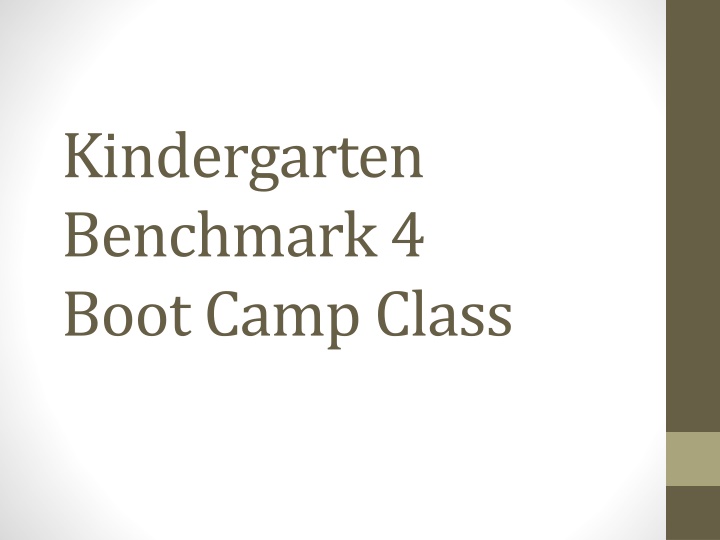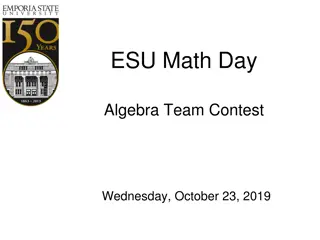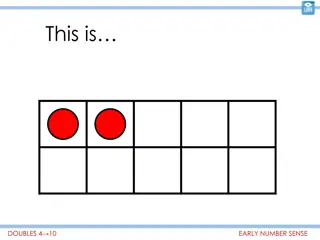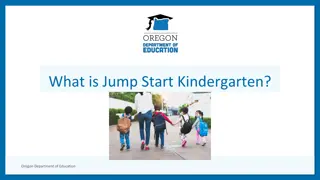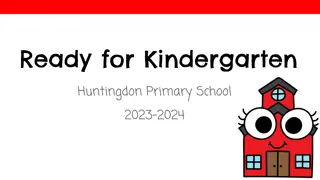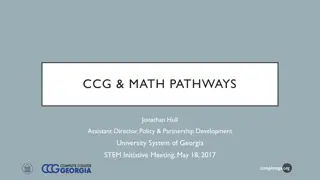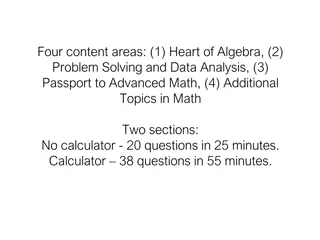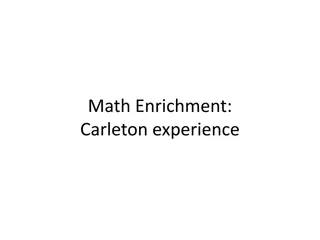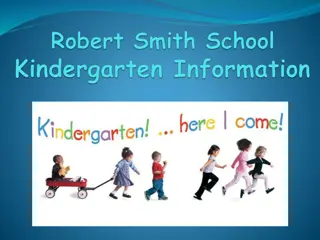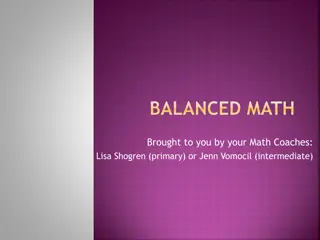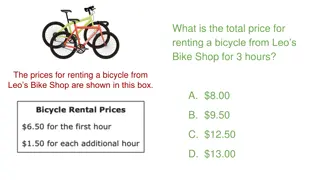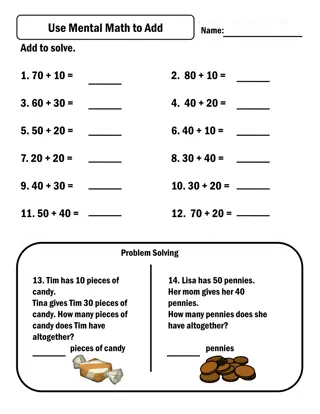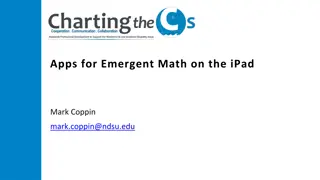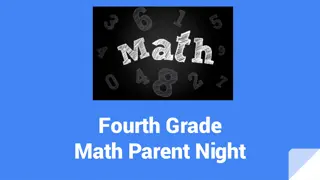Early Math Concepts: Number Sense and Problem Solving in Kindergarten
Developing number sense is crucial for young students as they progress in their math skills. This content explores the fundamentals of number system knowledge, including understanding quantities, magnitude, and the ability to break numbers into parts. It also delves into problem-solving scenarios where children explain their thinking and explore different methods to find solutions. Through math talk activities at different levels, students enhance their ability to articulate their reasoning and engage in deeper mathematical discussions.
Download Presentation

Please find below an Image/Link to download the presentation.
The content on the website is provided AS IS for your information and personal use only. It may not be sold, licensed, or shared on other websites without obtaining consent from the author.If you encounter any issues during the download, it is possible that the publisher has removed the file from their server.
You are allowed to download the files provided on this website for personal or commercial use, subject to the condition that they are used lawfully. All files are the property of their respective owners.
The content on the website is provided AS IS for your information and personal use only. It may not be sold, licensed, or shared on other websites without obtaining consent from the author.
E N D
Presentation Transcript
Kindergarten Benchmark 4 Boot Camp Class
Math Core Implementation Take that China Ellen If first grade sounds pretty young to be predicting math ability, well, no one expects tots to be scribbling sums. But this number sense, or what Geary more precisely terms "number system knowledge," turns out to be a fundamental skill that students continually build on, much more than the simple ability to count. What's involved? Understanding that numbers represent different quantities that three dots is the same as the numeral "3" or the word "three." Grasping magnitude that 23 is bigger than 17. Getting the concept that numbers can be broken into parts that 5 is the same as 2 and 3, or 4 and 1. Showing on a number line that the difference between 10 and 12 is the same as the difference between 20 and 22.
Unit 5 --Review Word Problems Math Talk Making Tens Teen Numbers Fluency (Addition and Subtraction Facts within 5)
Word Problems Teacher Resources Page T12 Problem Types
Math Talk Level One: A child briefly explains his or her thinking to others. The teacher helps children listen to and help others, models fuller explaining and questioning by others, and briefly probes and extends children s ideas. Example Story Problem: 2 kittens sit in the window. 1 more kitten jumps up to join them. How many kittens are in the window now? Who can tell us how many kittens are in the window? Billy: There are 3 kittens. How do you know? Billy: I know that 2 and 1 more is 3. Who found a different way to answer the problem? Lucy: I made a draw with 2 circles and 1 circle and then counted to circles to find three.
Math Talk Level Two: A child A child gives a fuller explanation and answers questions from other children. The teacher helps children listen to and ask good questions, models full explaining and questions (especially for new topics), and probes more deeply to help children compare and contrast methods. Example Story Problem: Snow has 8 marbles and 2 boxes. How many marbles can she put in each box? How can we find the answer to this problem? Ruth: We can draw the boxes and then draw marbles in the boxes. But what I don t know is if there should be the same number in each box? Jake: Is this a problem that has more than one answer? Why do you ask that, Jake? Jake: Because I know more than 1 way to break apart 8. Ruth: If we break apart 8, we can make a list of the ways. Do you think that is what we are supposed to do? Nancy: I think so, because we have been learning about break-aparts. Ruth: And it does not say the boxes have to be the same. What is one way to start the list? Caleb: Let s start with 1 and 7, and then change by 1 more each time. Nancy: I agree with Caleb.
Math Talk Level Three: The explaining child manages the questioning and justifying. Children assist each other in understanding and correcting errors and in explaining more fully. The teacher monitors and assists and extends only as needed. Example Story Problem: Joe at 4 green grapes and 5 purple grapes. How many grapes did he eat? Who will show us how to find the answer? Julia: I know that green grapes and purple grapes are both grapes, so I have to add 4 + 5. I know that is 9, so the answer is 9 grapes. I also made a drawing to be sure I was right. Here is my drawing. 0 0 0 0 0 0 0 0 Bob: I think your answer is right, but your drawing only shows 8. You need to fix your drawing. Nancy: Yes, when I count your circles you are showing 4 + 4. So draw another circle. How can we be sure that we make the right drawing? Julia: I should have checked my drawing to be sure I made 4 + 5. So we should always check what we do. Nancy: We need to count each thing when we make drawings. We have to be sure and not guess that it looks right.
Making Tens and Teen Numbers Virtual manipulatives games Randomness and white boards Make a Ten Randomness and white boards Make Partners Ten Spinner and Count to 100. Ones Spinner and Count until next spin. Ten partner showcase with iPad. (Make a slide show.) Cross out Ten Number Tile Comparison Counters, Math Mountains, Number Tiles, Geometry, Place Value Drawings
